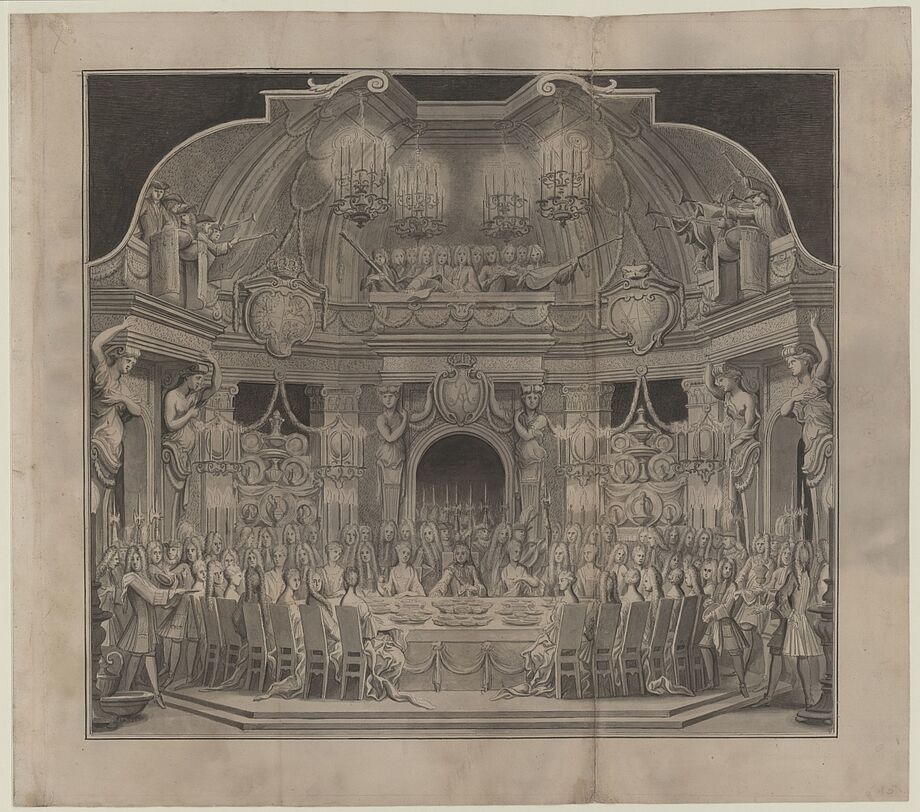Festive Dresden
Temporary structures were indispensable in every era of courtly festival culture. Their lifespan was determined by the duration of the event for which they had been created. It soon became possible, and comparatively cheap, to build structures predominantly out of wood, canvas, cardboard, papier mâché and stucco, with external appearance and interior fittings catering to the requirements of royal architecture.
Temple d’honneur
I. F. Wenzell based on Matthäus Daniel Pöppelmann: Temple d’honneur representé an grand festin donné aupre le 49 jour de la naissance de Sa M. le Roy de Pologne et Electeur de Saxe …
Paper, illustrations: Feather and brush in ink. – 1718.
Shelf mark: Mscr.Dresd.J.3, p. 4 (exterior view), p. 5 (interior view)
Master builder of Dresden’s Zwinger, Matthäus Daniel Pöppelmann (1662–1736), designed this banquet pavilion for the birthday celebrations of Elector-King Augustus II the Strong on 12 May 1718. The interior view shows the expected guests, starting with the members of the court chapel and ending with the ruler himself.
Für die Festlichkeiten zum Geburtstag Augusts des Starken am 12. Mai 1718 entwarf Matthäus Daniel Pöppelmann (1662–1736), der Baumeister des Dresdner Zwingers, diesen für die Tafel des Kurfürst-Königs bestimmten Pavillon. Dessen Innenansicht zeigt auch die zu erwartenden Personen, angefangen bei den Mitgliedern der Hofkapelle bis hin zum Herrscher.


